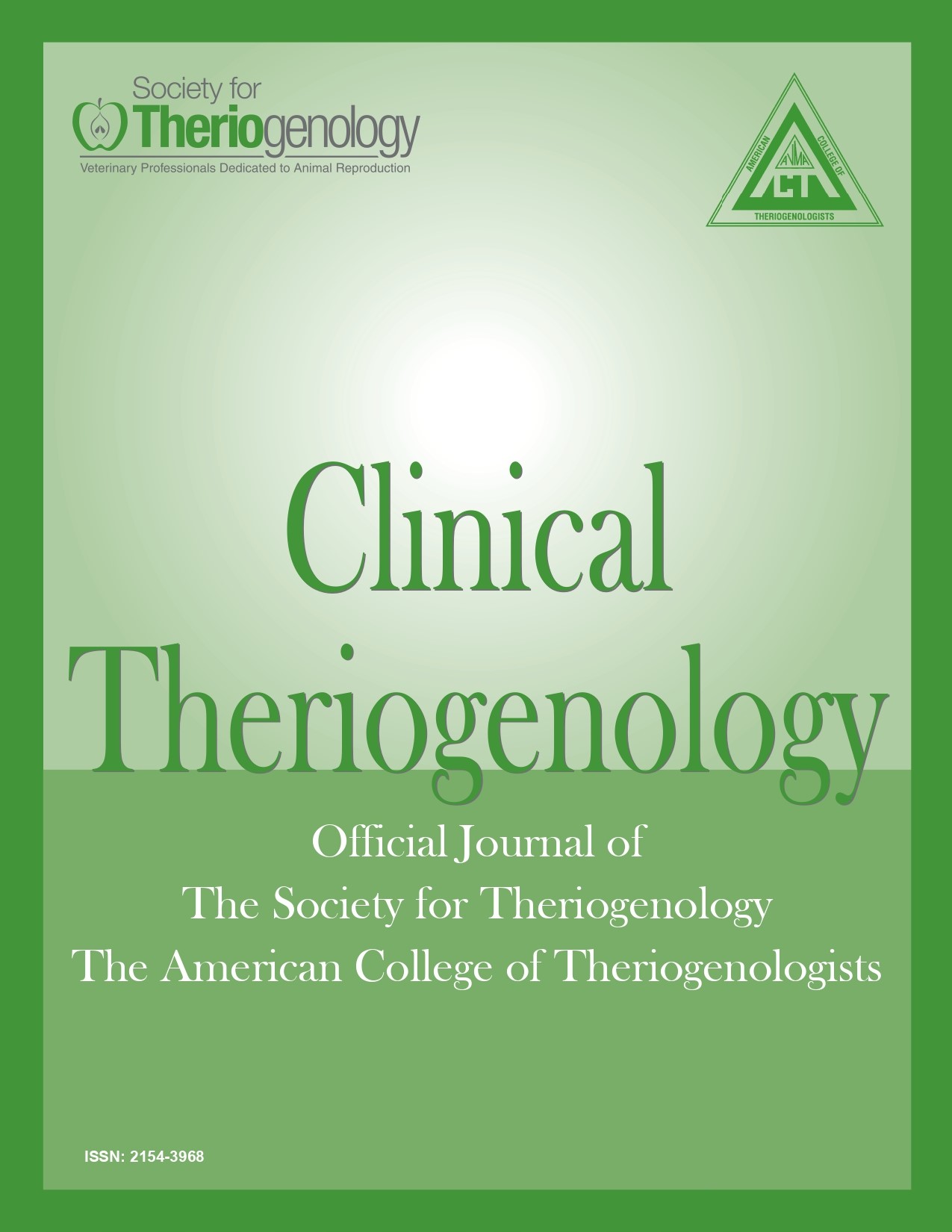Comparison of deslorelin and histrelin for induction of ovulation in mares
Abstract
Ovulation induction agents are used to synchronize ovulation to optimize reproductive management in breeding programs. The goal of this retrospective study was to compare interval from treatment to ovulation in mares given deslorelin acetate versus histrelin. Reproductive records of 134 estrous cycles from 91 privately owned mares managed for insemination with frozen semen were evaluated. Deslorelin acetate (1.8 mg) or histrelin (0.5 mg) were given as an intramuscular injection when a dominant follicle was > 35 mm in diameter, in the presence of uterine edema. Average interval from deslorelin administration to ovulation (34.8 ± 11.4 hours) tended (p = 0.054) to be shorter than the average interval from histrelin administration to ovulation (38.0 ± 8.1 hours). For both hormones, the highest percentage of ovulations occurred between 37 and 44 hours after treatment. When an ultrasonographic examination was done at or prior to 36 hours post treatment, ovulation was detected in 36.6 and 18.3% of mares given deslorelin and histrelin, respectively. In conclusion, interval from treatment to ovulation and percentage of mares that ovulated within 48 hours were not significantly different between mares receiving 1.8 mg of deslorelin acetate versus 0.5 mg of histrelin. Furthermore, sequential scheduled ultrasonographic examinations are recommended after any GnRH agonist treatment, as some mares ovulate earlier than anticipated.
Downloads

This work is licensed under a Creative Commons Attribution-NonCommercial 4.0 International License.
Authors retain copyright of their work, with first publication rights granted to Clinical Theriogenology. Read more about copyright and licensing here.





